When planning an outdoor painting project, there are several factors to consider. While the choice of color and quality of paint are often the main focus, it’s important not to overlook the unsung hero of exterior painting: the primer. The primer plays a crucial role in bridging the gap between the surface and the paint, ensuring a durable and beautiful paint job that stands the test of time.
But what exactly is a primer and is it always necessary for exterior paint projects? A primer is a preparatory coating that provides a smooth and uniform surface for the paint to adhere to. It helps to seal the surface, improves paint adhesion, and enhances the overall durability and longevity of the paint job. While not always required, using a primer can greatly benefit your exterior paint project.
By applying a primer, you create a solid foundation for the paint to bond to, preventing issues such as peeling, cracking, and uneven coverage. It can also help to block stains, cover up previous paint colors, and provide an extra layer of protection against moisture and weathering.
So, when should you consider using a primer for your exterior paint project?
Additionally, if you’re changing the color drastically or if you’re applying paint to a surface that has never been painted before, a primer can help ensure a more even and professional-looking finish.In conclusion, while the choice of paint color and quality is important, don’t overlook the significance of a primer in your outdoor painting project. Taking the time to properly prepare the surface and apply a primer can make a significant difference in the longevity and overall appearance of your paint job. So, next time you embark on an exterior paint project, give some thought to the unsung hero – the primer.
Should You Prime Your House?
Why Prime?
Priming is crucial for several reasons. Firstly, it helps to seal the porous surface, creating an ideal platform for the paint to bond with, which in turn enhances its durability and longevity. By providing a strong foundation, primer ensures that the paint adheres properly, preventing peeling or cracking over time.
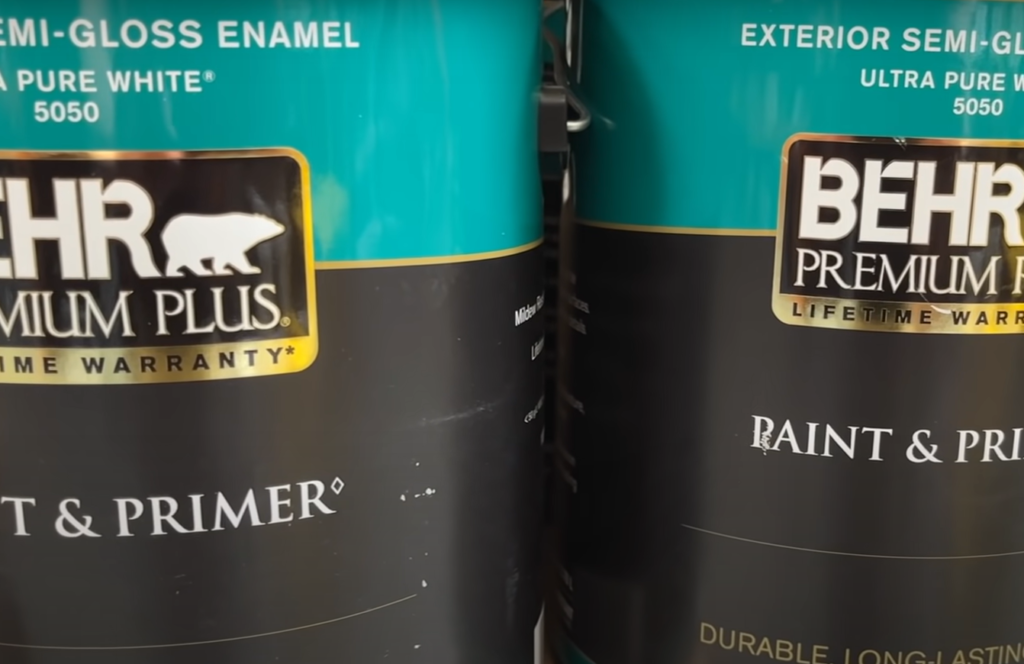
Secondly, primer acts as a stain blocker, effectively preventing old stains and wood tannin from seeping through the new paintwork. This is particularly important when dealing with surfaces that have been previously stained or have a high tannin content. By blocking these stains, primer ensures that the new paint color remains true and vibrant.
In addition to its sealing and stain-blocking properties, primer also covers minor flaws, providing a smooth and flawless finish. It helps to even out the surface, filling in small imperfections such as cracks, dents, or uneven texture. This creates a more professional-looking result, especially when using lighter paint colors that tend to highlight any imperfections.
Lastly, primer plays a role in color enhancement. By providing a neutral base, it allows the true hue of your paint to shine through, particularly when transitioning from a darker to a lighter shade. Without primer, the underlying surface color may affect the final appearance of the paint, resulting in a less accurate representation of the desired color.
While it may be tempting to skip the step of priming in order to save time and money, using a primer can ultimately deliver a more polished and long-lasting result. The extra effort put into priming pays off in the form of a smoother application, improved paint adherence, better color representation, and increased paint durability. So, whether you’re painting a wall, furniture, or any other surface, taking the time to properly prime can make a significant difference in the overall outcome.
When to Prime
When it comes to painting projects, priming plays a crucial role in ensuring the best possible outcome. It becomes particularly essential in certain situations to achieve optimal results. For instance, if your exterior walls are bare or composed of porous materials such as wood or new drywall, applying a primer is highly beneficial. Not only does it prepare the surface for paint adhesion, but it also provides a more uniform appearance.
Moreover, using a primer is highly recommended when painting over stained, damaged, or rusted surfaces. By doing so, you can prevent these underlying issues from showing through the paint and marring the final result. Additionally, if you’re planning to change the color of your exterior, especially from a dark shade to a lighter one, using a primer is a must. It creates a neutral base, allowing the true color of the paint to shine through and achieve the desired effect.
Even if you’re repainting with a similar or darker color, incorporating a primer into your painting process can yield significant benefits. It helps in achieving a smoother finish, enhancing the overall appearance of your project. What’s more, using a primer can contribute to longer-lasting results, ensuring the longevity and durability of your painted surfaces.
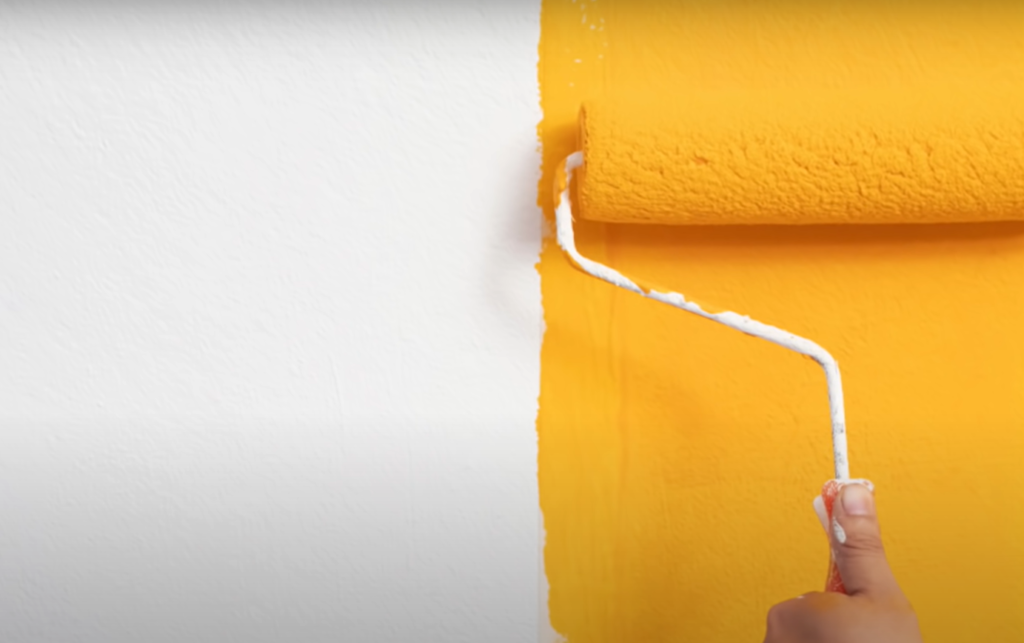
Always keep in mind that the objective of your painting project extends beyond mere aesthetics. While enhancing the visual appeal of your property is important, it is equally crucial to protect and prolong the life of your surfaces. With the right priming techniques, you can achieve both these goals simultaneously, ensuring a stunning and long-lasting finish.
When Priming May Not Be Necessary
While primer offers numerous benefits for most exterior painting projects, there are certain conditions where it might not be necessary. For instance, if the existing paint on your property is in good condition without any major stains, damages, or rust, and you’re planning to repaint with a similar or darker color, the new paint can adhere directly to the existing paint layer without the need for a primer. This can save you time and effort during the painting process.
Additionally, some high-quality paints come with a primer included, known as self-priming paints. These paints are designed to provide excellent adhesion and coverage, making them suitable for situations where a separate primer may not be required.
Nevertheless, it’s worth considering that using a primer offers more than just surface preparation. Primers can enhance the durability and finish of the paint job, providing a smoother and more long-lasting result. They can also help with better color retention and prevent potential issues such as peeling or blistering. Therefore, skipping the primer should be a well-considered decision, taking into account the specific condition and requirements of your property.
Always remember that each painting project is unique, and what works best will depend on various factors, including the type of surface, the condition of the existing paint, and the desired outcome. It’s advisable to consult with a professional or follow the guidance provided by paint manufacturers to ensure the best results for your specific project.
To Prime or Not to Prime
The decision to prime or not largely depends on the specific conditions of your painting project. If your walls are bare, stained, or damaged, if you are changing the color of your exterior, or if you simply want to ensure the longest-lasting result, opting for a primer is a wise choice. Not only does primer provide a smooth and even surface for the paint to adhere to, but it also helps to seal and protect your walls, preventing any stains or imperfections from bleeding through the new coat of paint.
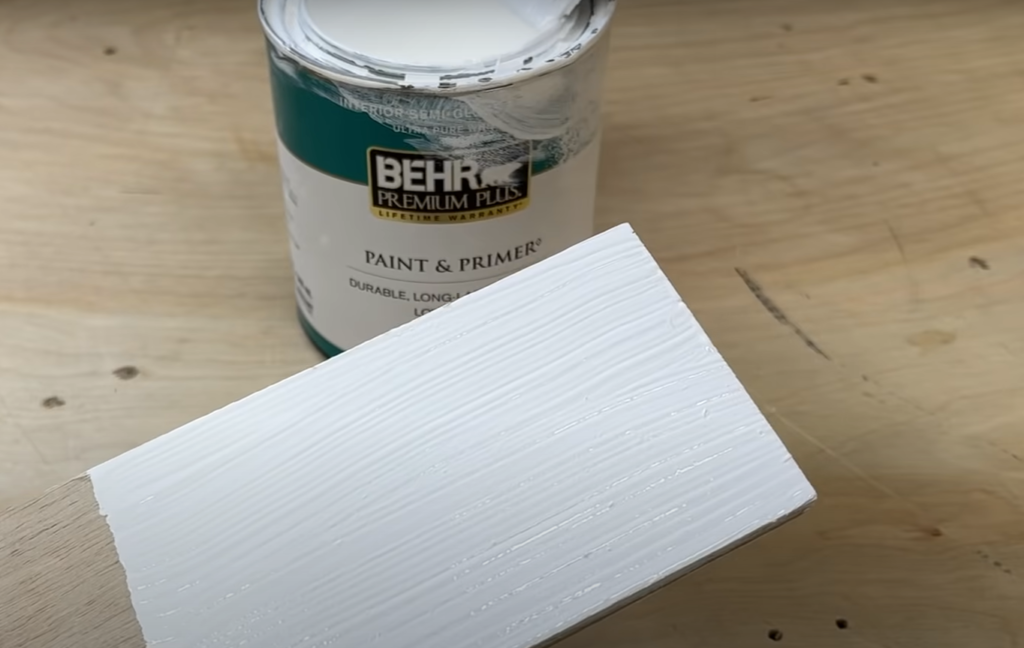
On the other hand, if the existing paint is in good condition and you’re applying a similar or darker color, you may choose to forgo the primer. Some high-quality paints even include primer, potentially eliminating the need for a separate priming step. However, it’s important to remember that the role of primer extends beyond surface preparation; it enhances paint adhesion, durability, and finish. By using primer, you are ensuring that your paint will adhere better to the surface, resulting in a longer-lasting and more durable finish.
While skipping the primer step may save you some time and upfront costs, applying primer often pays off in the long run with a smoother, more vibrant, and durable exterior. It provides an extra layer of protection for your walls and helps to achieve a more professional-looking finish. Ultimately, the decision comes down to evaluating the specifics of your project and the long-term value you want from your painting job. Taking the time to properly prime your walls can make a significant difference in the overall quality and longevity of your paint job.[1],[2]
When You Should Use Paint Primer
There are several situations where using a paint primer is highly recommended. First and foremost, if you’re painting over bare, untreated surfaces such as wood, concrete, or new drywall, a primer is crucial to seal the surface and provide a solid base for the paint to adhere to. By creating a barrier between the paint and the surface, the primer helps the paint to adhere better, resulting in a more durable and long-lasting finish.
Whether your walls have water stains, smoke residue, rust, or significant wear and tear, applying a primer can help conceal these imperfections and prevent them from seeping into the topcoat. The primer acts as a sealant, blocking any stains or discolorations from showing through the fresh coat of paint.Furthermore, if you’re planning to change the color of your paint, especially when transitioning from a darker shade to a lighter one, using a primer is essential. Applying a primer before the new coat of paint helps to prevent the old color from bleeding through and affecting the final result. This ensures that your new paint color appears vibrant and true to its intended shade.
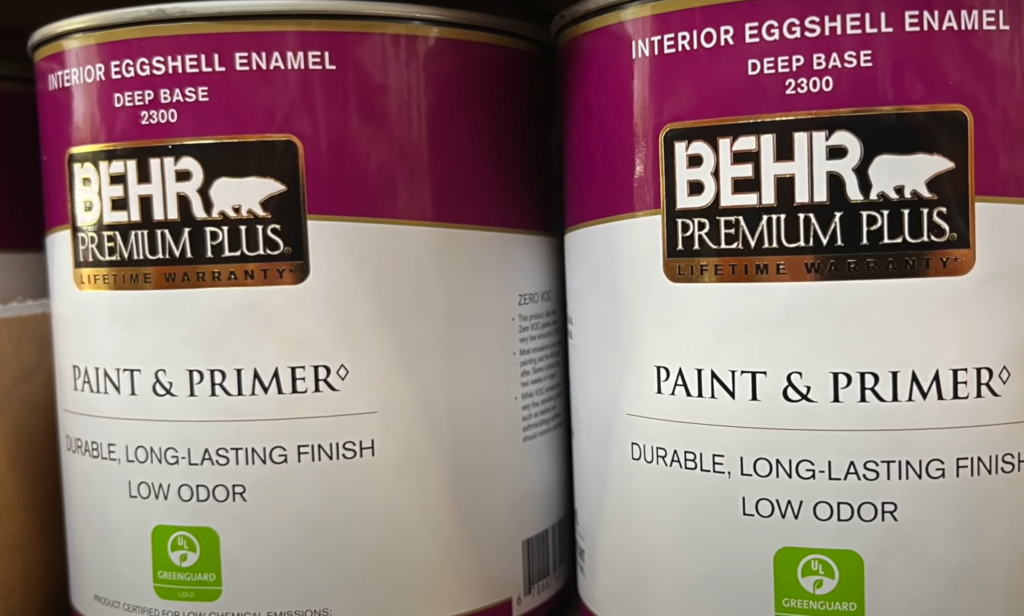
In essence, using a primer provides numerous benefits. It helps ensure a smooth and even finish, increases the adhesion of the paint to the surface, and enhances the vibrancy and longevity of your chosen paint color. By acting as an extra layer of protection, the primer also helps extend the lifespan of your paint job, keeping it looking fresh and new for years to come.
So, whether you’re starting with bare surfaces, dealing with damaged walls, or changing paint colors, incorporating a primer into your painting process is a wise decision. It not only improves the overall quality and durability of your paint job but also provides added protection for the underlying material.[3]
FAQ
Can you use exterior paint without primer?
Yes, you can use exterior paint without a primer, but it’s important to note that the results may not be as durable or vibrant as when a primer is used. Primers are specifically designed to help the paint adhere better to the surface, creating a more uniform finish and providing an additional layer of protection against the elements.
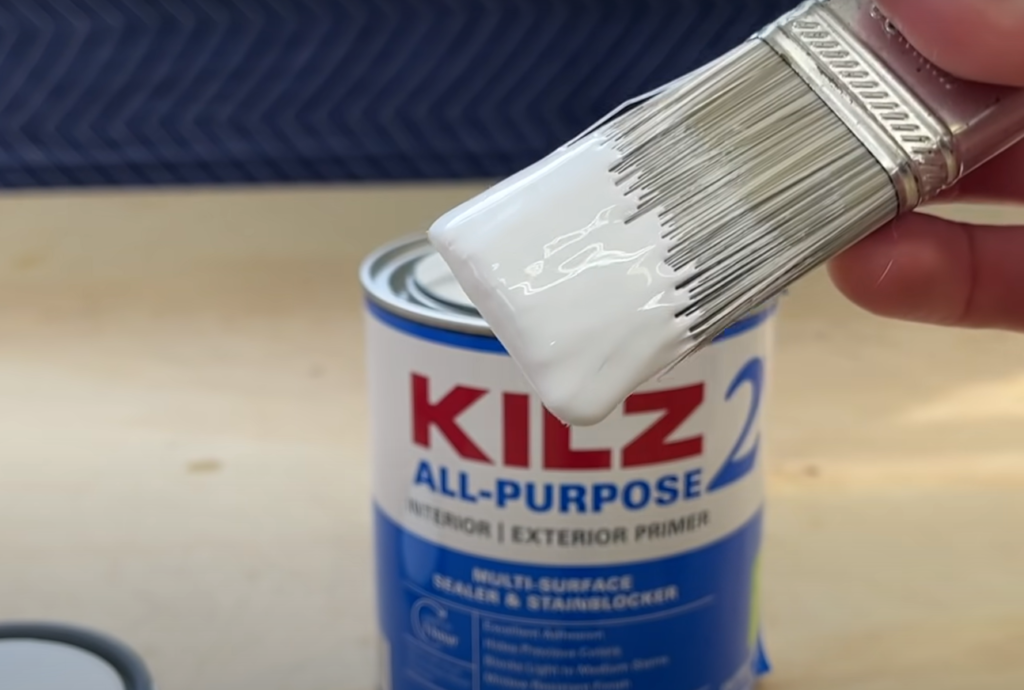
Without primer, the paint may peel, chip or fade faster, especially in harsh weather conditions. The color may also not appear as bright or consistent as it could with a primer. So while it’s possible to paint without primer, using one can greatly enhance the longevity and appearance of your exterior paint job.
What happens if you don’t prime exterior paint?
If you skip priming before painting the exterior of a building, you may encounter several issues. The main consequence is poor adhesion. Paint often struggles to stick directly to glossy, stained, or previously painted surfaces. Without primer, the paint may peel, blister, or crack prematurely, reducing the lifespan of your paintwork. Additionally, the paint’s color may not be as vibrant or consistent without a primer. Uneven absorption of paint can also make the paint look patchy, requiring additional coats for a uniform finish. These factors can result in a subpar appearance and reduced durability, leading to increased costs and effort in the long run.
What happens if you don’t use primer before painting?
Skipping the primer step in your painting process can cause several issues. Firstly, primer helps paint adhere easily, preventing peeling, chipping, or flaking over time. Secondly, without primer, paint may be applied unevenly, resulting in a patchy appearance. Additionally, the paint color may not appear as vibrant or true to the chosen shade without a base layer of primer. Lastly, skipping primer reduces the durability of your paint job, making it more susceptible to damage. Using primer is not optional; it significantly affects the quality, appearance, and longevity of your paint job.
Can you paint over existing exterior paint?
Yes, you can paint over existing exterior paint. However, it’s not as simple as just applying a new coat of paint. The existing paint’s condition plays a significant role in determining whether you can paint directly over it. If the current coat is peeling, chipping, discolored, or showing signs of damage, it would be beneficial to remove it before applying a new one. Furthermore, it’s crucial to thoroughly clean the surface and let it dry completely before painting. Even when the old paint is in good condition, using a primer before applying the new paint is recommended. This is because the primer creates a smooth and consistent surface for the paint to adhere to, enhancing its durability and appearance. So, while it’s possible to paint over existing exterior paint, proper surface preparation is vital to ensure a successful and long-lasting paint job.
Is it OK to paint with old paint?
It is possible to paint with old paint, but it primarily depends on the condition of the paint. If the paint has been properly stored and shows no signs of spoilage, such as mold, unpleasant odor, or separation that can’t be mixed back together, it can still be used.
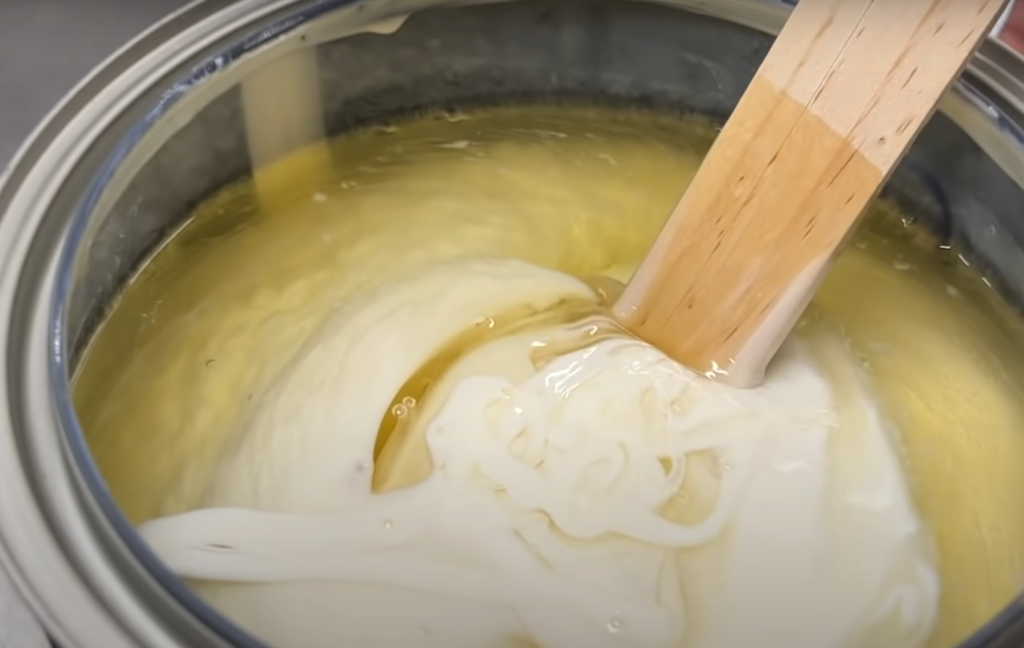
However, if the paint has hardened or developed a chunky texture, it should not be used for your painting project. Additionally, old paint may not provide the same level of coverage or finish as new paint, and the color may not match exactly due to aging. Therefore, for optimal results, it’s generally recommended to use new paint, especially for large or highly visible projects. Always remember to properly prep the surface, including using primer if necessary, to ensure the best possible finish and durability.
Do I need to sand exterior paint before repainting?
Yes, sanding the existing exterior paint before repainting is an advisable step, especially if the current paint is chipped, peeling, or has a glossy finish. Sanding helps to create a smoother surface by removing imperfections, such as bumps or rough areas, which can affect the final appearance of the new paint. Additionally, it ensures better adhesion for the new paint, preventing it from peeling or flaking off prematurely.
By sanding the surface, you not only improve the aesthetics but also enhance the durability of the paint job. The process of sanding removes any loose or flaky paint, allowing for a more uniform application of the new paint. This promotes a seamless finish and minimizes the risk of the paint cracking or peeling over time.
However, it’s important to note that sanding may not always be necessary if the existing paint is in excellent condition, flat, and well-adhered. In such cases, simply cleaning the surface thoroughly could be sufficient to provide a suitable base for the new paint. Assessing the condition of the existing paint and making an informed decision based on its integrity is crucial.
Remember, a well-prepared surface is key to a successful and long-lasting paint job. Taking the time to properly sand the surface, when required, will ensure that your repainted exterior not only looks great but also stands the test of time.
Useful Video: Primer Before Paint: When Is It Necessary & When Is It A Waste?
Conclusion
Using a high-quality primer before applying exterior paint plays a vital and indispensable role in ensuring the ultimate durability, vibrancy, and overall quality of the paint job. This crucial step provides a strong foundation for the paint, enhancing its ability to adhere effectively to the surface and withstand the harsh outdoor elements over time. By meticulously preparing the surface with a primer, you create a smooth and even base that enhances the final finish, preventing issues like peeling, cracking, and premature fading.
While it may seem tempting to skip this initial step as a shortcut, doing so can compromise the long-term performance and appearance of the paint. Without proper priming, the paint may struggle to adhere properly, leading to lackluster results and a diminished lifespan. By investing the time and effort into applying a primer, you set the stage for a successful painting project that will stand the test of time.
Moreover, when considering repainting over existing exterior paint or using old paint, it is crucial to assess the condition of the current paint. Evaluating its integrity, adhesion, and overall condition is essential to ensure a seamless and durable finish. By carefully examining the existing paint, you can identify any areas that require attention, such as peeling or cracking, and take the necessary steps to address them before applying a fresh coat of paint. This attention to detail and careful evaluation will contribute to the overall longevity and aesthetic appeal of the final result.
Lastly, sanding the surface before repainting is often necessary to achieve a flawless and professional finish. Sanding helps to smooth out imperfections, remove any loose or flaking paint, and create a surface that the new paint can adhere to effectively. It promotes better paint adhesion, resulting in a more seamless and long-lasting finish. By taking the time to sand the surface, you ensure that the new paint will have a strong bond with the underlying surface, reducing the risk of premature peeling or other issues.
In conclusion, a successful exterior painting project involves meticulous preparation, informed decision-making, and attention to detail at every step. From using a primer to evaluating the condition of existing paint and sanding the surface, each stage contributes to the overall longevity, durability, and aesthetic appeal of the finished result. By prioritizing proper preparation and considering these important factors, you can achieve a stunning and long-lasting paint job that will enhance the beauty and value of your property for years to come.
References:
- https://agwilliamspainting.com/blog/2022/03/do-you-always-need-to-prime-before-exterior-painting/
- https://www.nashpainting.com/blog/house-painting-to-prime-or-not-to-prime
- https://tribblepainting.com/paint-primer-exterior-painting/




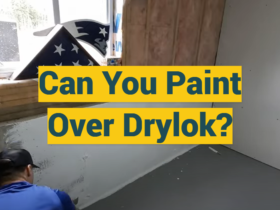





Leave a Review